
Amata Long Thanh Industrial Park
- Investor: AMATA CITY LONGTHANH JOINT STOCK COMPANY
- Price: 200 USD/m2
- Area: 410,31 Ha
Dong Nai province is located in southern Vietnam. It covers an area of about 5,900 square kilometers. The province has a diverse landscape, including plains, hills, and forests.
Dong Nai is known for its industrial development. Many factories and industrial zones are located in the province, contributing to its economic growth. The province is a major producer of textiles, garments, and electronic goods.
The province is also famous for its natural beauty. It is home to the Cat Tien National Park, a UNESCO-recognized biosphere reserve. The park is known for its rich biodiversity, with many rare and endangered species of plants and animals.
Dong Nai has a vibrant culture and history. There are several historical sites and temples that attract visitors. The province is also known for its traditional festivals and local cuisines.
In terms of infrastructure, Dong Nai has a well-developed transportation system. It is connected to major cities in Vietnam through highways and railways. The province also has an international airport, making it easily accessible to tourists and investors.
In recent years, Dong Nai has seen rapid urbanization and population growth. This has led to challenges such as traffic congestion and environmental pollution. However, the local government is working on implementing sustainable development plans to address these issues.
Overall, Dong Nai is a dynamic province with a mix of industrial development, natural beauty, and cultural heritage. It offers opportunities for both business and leisure, making it an attractive destination in southern Vietnam.
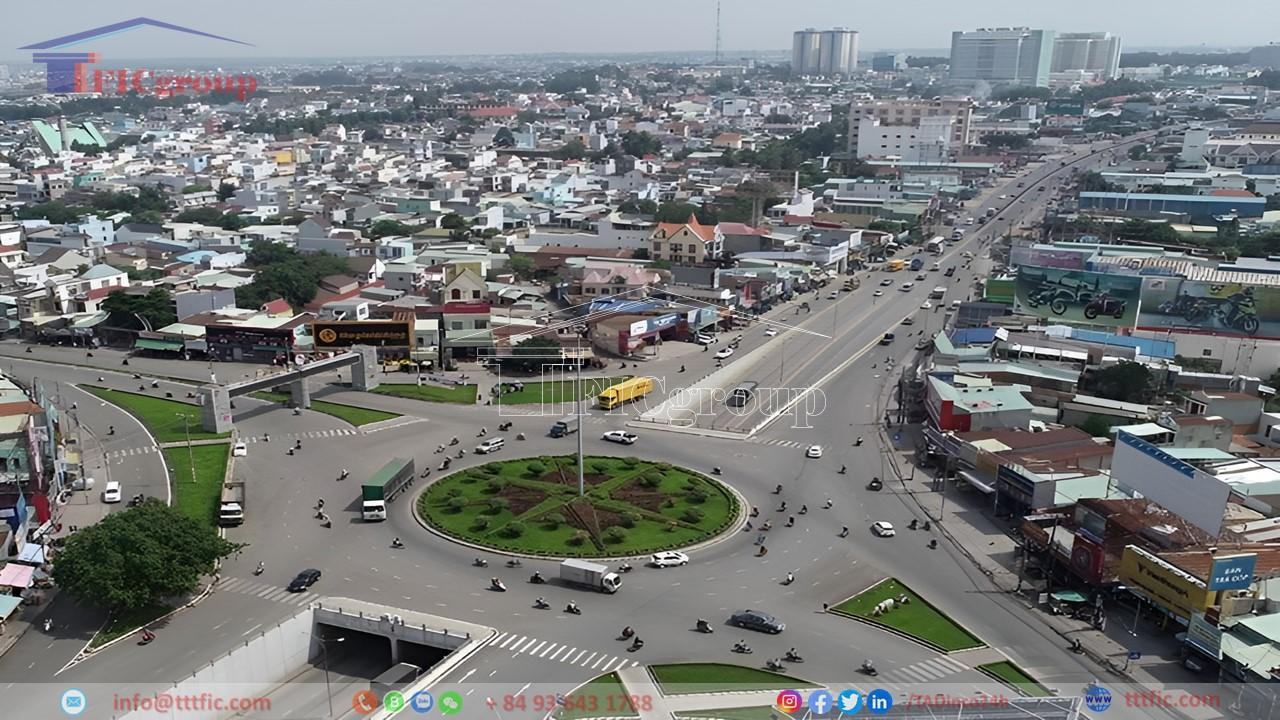
Bien Hoa City – Dong Nai Province – TTTFIC Group
Dong Nai province, covering 5,907.2 km², lies in the South’s pivotal economic region. It borders Binh Thuan to the east, Binh Duong and Ho Chi Minh City to the west, Ba Ria – Vung Tau to the south, Lam Dong to the northeast, and Binh Phuoc to the northwest.
As a vital part of the thriving economic region with Ho Chi Minh City, Binh Duong, and Ba Ria – Vung Tau, Dong Nai serves as a gateway to the South’s prosperous economy. It boasts a dense population, particularly in Bien Hoa, home to over one million residents, along with Trang Bom and Long Thanh districts.
The current provincial capital, Bien Hoa City, is situated 30 km from Ho Chi Minh City and 1,684 km from Hanoi via National Highway 1. It surpasses the population of Da Nang and Can Tho, two centrally governed cities, making it the most populous city in the country.
Overall, Dong Nai province plays a crucial role in driving southern economic development. With its diverse geography and extensive transportation network, it serves as a major hub connecting key cities in the region. The province’s vibrant urban centers and significant population contribute to its dynamic and significant status in Vietnam.
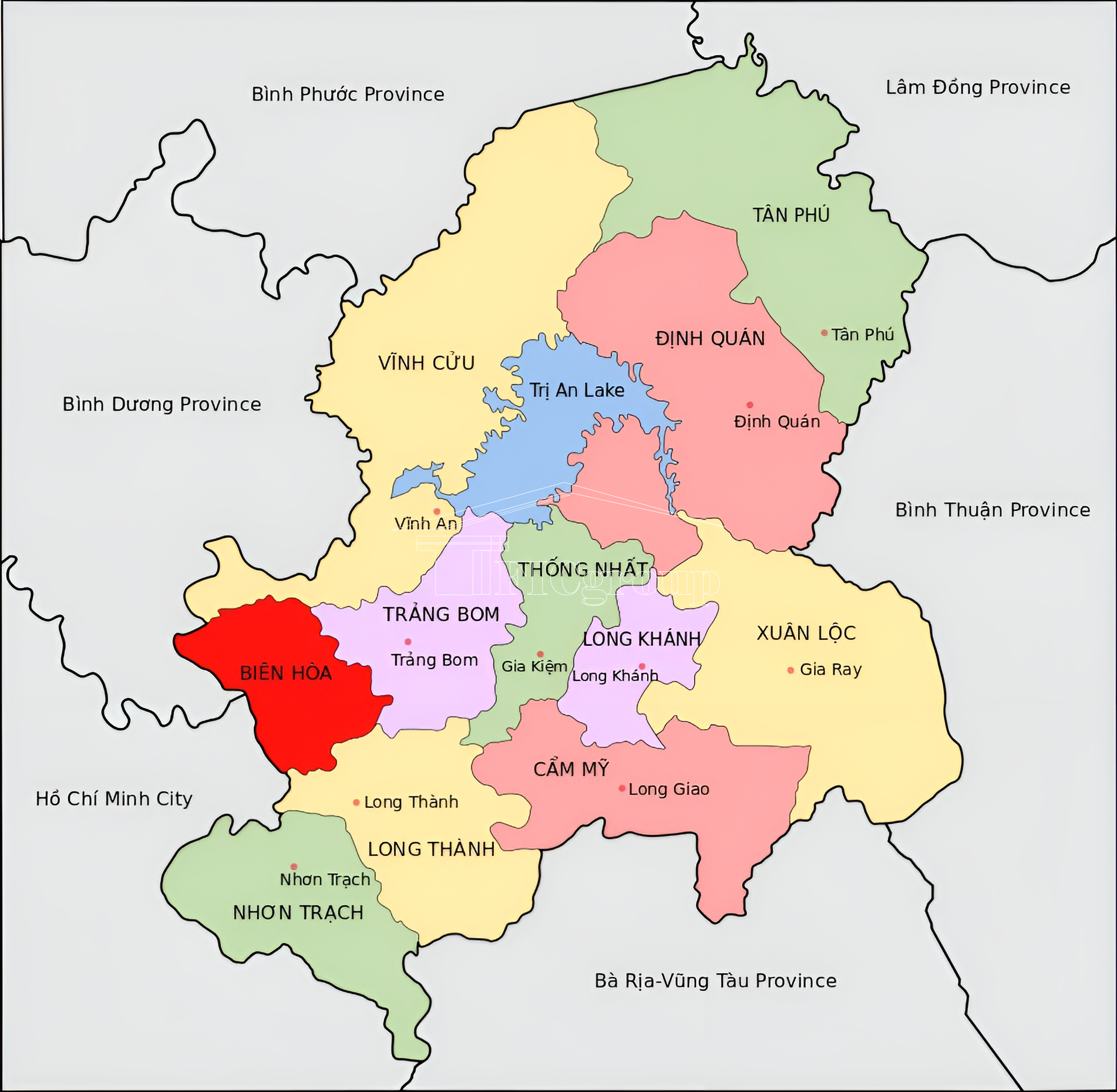
Administrative Divisions of Dong Nai Province – TTTFIC Group
Dong Nai province features a varied landscape, including flat plains, scattered low hills, and gentle slopes in the north-south direction. Several types of terrain exist, including plains, sedimentary basins, undulating hills, low mountains, alluvial soil, gley soil, and flat sandy areas with perennially flooded low-lying areas. Most of the land, including black, brown, and gray soil, has slopes less than 8 degrees, while red soil has slopes mostly under 15 degrees. However, thin-layered soil and volcanic rocks have steeper slopes. Dong Nai has abundant and fertile land, classified into 10 major groups but can be grouped into three general categories based on origin and quality: soil formed on basalt, soil formed on ancient alluvium and shale, and soil formed on recent alluvium.
Regarding natural land area, agricultural land accounts for 49.1%, forest land covers 30.4%, specialized land occupies 13%, residential land occupies 2.1%, and unused land accounts for 5.4%.
Dong Nai has a tropical monsoon climate with two contrasting seasons: dry and rainy. The dry season typically lasts from December to April, while the rainy season extends from May to November, with the end of the rainy season varying from early October to December. The average annual temperature ranges from 25 to 27 °C, with extreme highs of around 40 °C and lows of 12.5 °C. The annual sunshine hours range from 2,500 to 2,700 hours, and the average humidity remains high at 80-82%.
Dong Nai’s forests exhibit typical characteristics of tropical forests, boasting diverse flora and fauna. Notably, the Nam Cat Tien National Park stands out as a prime example. The province also possesses a rich variety of mineral resources, including precious metals, colored metals, gemstones, ceramics and construction materials, cement additives, peat, mineral water, and hot springs.
In 2022, Dong Nai province demonstrated impressive economic growth, with its Gross Regional Domestic Product (GRDP) reaching 233,979.73 billion VND, a 9.22% increase from the previous year. The agriculture, forestry, and fisheries sector grew by 3.89%, while the industry and construction sector experienced a 9.06% increase. The service sector saw significant growth of 13.08%, and tax revenue from products rose by 6.26%. Dong Nai’s growth rate surpassed the set target and the national average, outperforming several provinces in the Southeast region. Ranking fourth among 63 provinces and cities in terms of GRDP, Dong Nai’s growth made a substantial contribution to the overall national progress.
The remarkable growth in 2022 can be attributed to the recovery from the low growth rate in the previous year, which was impacted by the Covid-19 pandemic. With the situation under control, Dong Nai witnessed a swift recovery in industrial production, focusing on both domestic consumption and exports. Favorable export markets and increased contracts revitalized the domestic market, while commercial activities and services gradually returned to normal. Additionally, favorable weather conditions and effective measures against African swine fever boosted agricultural production. Various sectors, including processing and manufacturing industries, electricity production, construction, wholesale and retail, transportation, and accommodation and food services, experienced significant growth rates. The third quarter of 2022 stood out with high growth, driven by the service sector and the industrial and construction sector.
The agriculture, forestry, and fisheries sector, the industry and construction sector, and the service sector all played significant roles in contributing to the overall growth. The recovery of commercial activities, services, and entertainment played a vital role in the service sector’s growth, outperforming the industrial sector for the first time. Tax revenue from products also increased, further contributing to the overall growth.
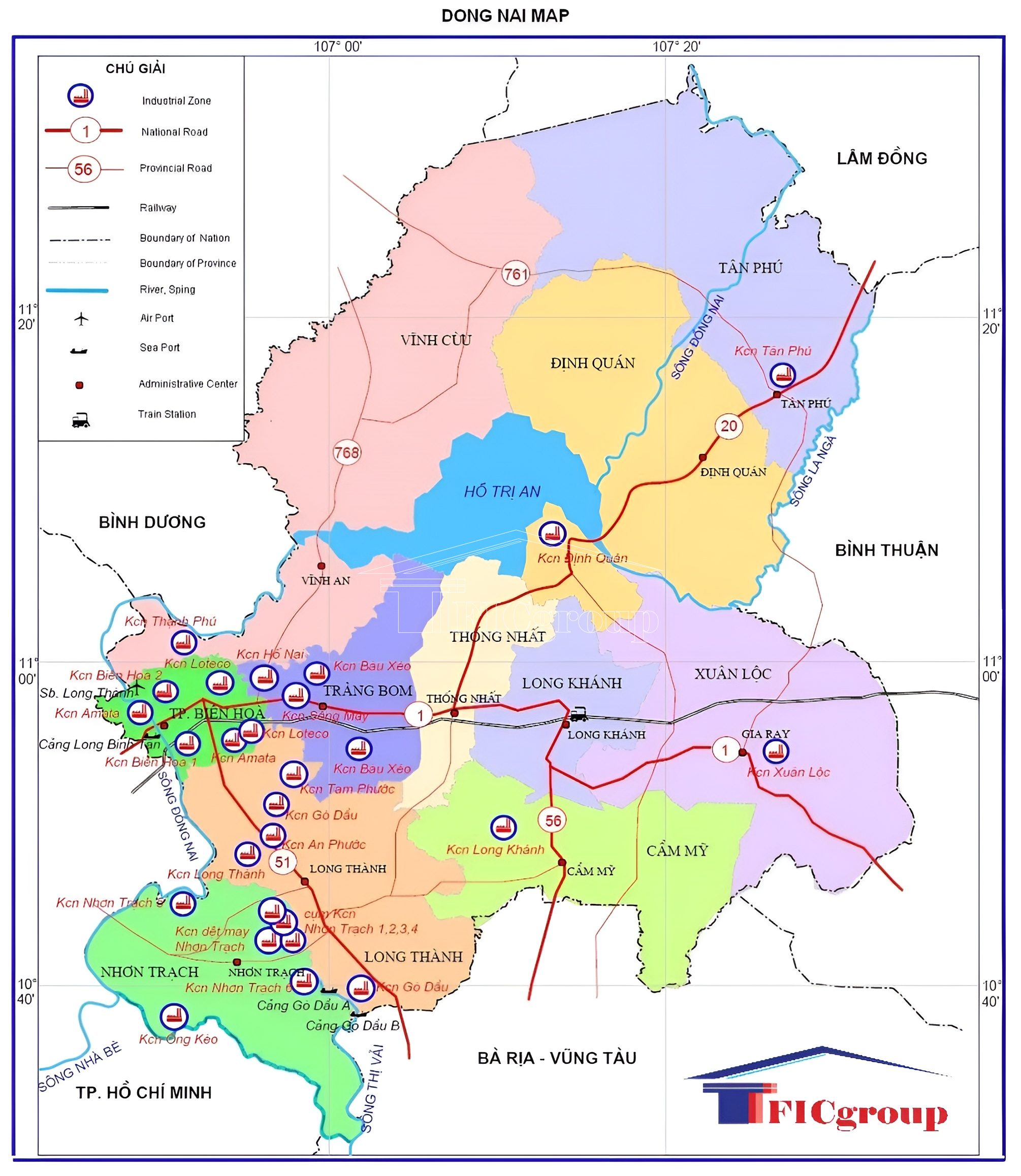
Master Plan of Industrial Zones in Dong Nai Province – TTTFIC Group
The industrial production in Dong Nai province exhibited signs of recovery and stability in early 2022. The favorable export market and increased orders resulted in significant production growth, with ample labor supply meeting the demands. However, starting from the third quarter of 2022, production slowed down due to global market difficulties, impacting the economy. Businesses encountered challenges due to high inflation, potential supply chain disruptions, particularly for raw materials, and a sharp decline in exports, especially to the US and Europe. Footwear, textiles, garments, wood products, and electronics industries faced order shortages and job scarcity, leading to unpaid leaves and resignations. Nevertheless, many businesses overcame these obstacles, sustaining production through effective solutions, ensuring continued industrial production in the province in later months. Nevertheless, these difficulties had a significant impact on industrial production.
The estimated industrial production index for 2022 rose by 8.32% compared to the previous year (3.95% increase). Notably, mining grew by 5.48%, processing and manufacturing by 8.46%, electricity production and distribution by 6.71%, and water supply, waste management, and treatment by 4.74%. Key industries experienced substantial growth, including food processing (7.02%), garment production (11.88%), leather and related products (8.11%), paper and paper products (8.7%), chemicals (10.22%), and rubber and plastic products (7.14%). This growth can be attributed to businesses’ efforts to overcome challenges and proactive management, direction, and support from Dong Nai province’s leaders. However, certain sectors faced decreases compared to the previous year, such as electronic and computer production (-0.82%), while others experienced minimal growth, like furniture production (0.4%), metal production (0.82%), and metal product manufacturing (1.67%).
Bien Hoa 2 Industrial Parks are prominent industrial zones in Dong Nai Province, facilitating economic growth and international trade. Here is a list of some of these industrial parks and their names:
Loc An – Binh Son Industrial Park
Dau Giay Industrial Park
Giang Dien Industrial Park
Long Khanh Industrial Park
Ong Keo Industrial Park
AGTEX Long Binh Industrial Park
Tan Phu Industrial Park
Bau Xeo Industrial Park
Thanh Phu Industrial Park
Xuan Loc Industrial Park
Nhon Trach 2 – Loc Khang Industrial Park
Nhon Trach 2 – Nhon Phu Industrial Park
Nhon Trach 6 Industrial Park
Long Duc Industrial Park
An Phuoc Industrial Park
Long Thanh Industrial Park
Nhon Trach 5 Industrial Park
Tam Phuoc Industrial Park
Nhon Trach Garment Industrial Park
Bien Hoa I Industrial Park
Song May Industrial Park
Nhon Trach 1 Industrial Park
Nhon Trach 2 (D2D) Industrial Park
Nhon Trach 3 Industrial Park
Long Binh (Loteco) Industrial Park
Bien Hoa II Industrial Park
Amata Bien Hoa Industrial Park
Go Dau Industrial Park
Ho Nai Industrial Park
Suoi Tre Industrial Park
Dinh Quan Industrial Park
AMATA Long Thanh High-Tech Industrial Park
These industrial parks contribute significantly to the economic development of the Dong Nai region and offer various opportunities for businesses and investors seeking to operate in Vietnam’s growing industrial sector.
The estimated total construction production value (at current prices) for the entire year of 2022 reached 70,980.8 billion Vietnamese dong, representing a 20.67% increase compared to the previous year. Specifically, state-owned enterprises reached 161.5 billion dong, experiencing a 39.18% decrease; non-state enterprises reached 52,414.4 billion dong, recording a 19.46% increase; enterprises with foreign investment reached 2,880.8 billion dong, marking a 20.52% increase; and other types reached 15,214.1 billion dong, showing a 26.34% increase. The construction production value (at constant 2010 prices) reached 43,757.9 billion dong, indicating a 12.13% increase compared to the same period. The reasons for this growth include the controlled pandemic situation, along with the development of industrial production and increased foreign investment projects, leading to a higher demand for infrastructure investment and residential housing in the area. Additionally, the construction progress of the Long Thanh airport relocation area was actively promoted.
In 2022, besides continuing the implementation of projects and ongoing constructions from 2021, the initiation of new projects in 2022 contributed to the increased construction production value compared to the same period.
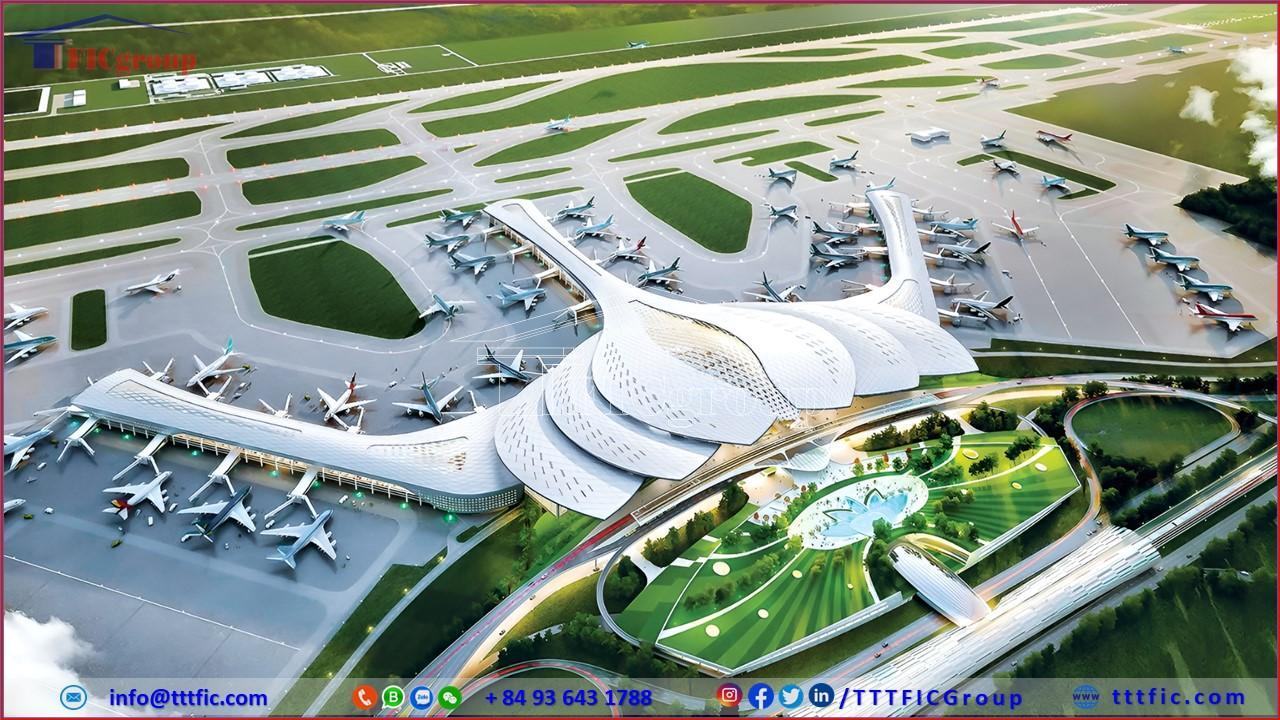
Long Thanh International Airport – Dong Nai Province – TTTFIC Group
As of 2019, the total population of Dong Nai province reached 3,097,107 people, with a population density of 516.3 people per square kilometer. The urban population accounted for 48.4% while the rural population accounted for 51.6%. Dong Nai is the most populous province in the Southeast region, with over 3 million inhabitants (excluding Ho Chi Minh City). It is the second most populous province in the South (after Ho Chi Minh City) and the fifth most populous in the country (after Ho Chi Minh City, Hanoi, Thanh Hoa, and Nghe An). In terms of urban population, it ranks fourth nationwide (after Ho Chi Minh City, Hanoi, and Binh Duong).
The province is the second largest in the Southeast region (after Binh Phuoc) and the third largest in the South (after Binh Phuoc and Kien Giang). According to statistics from the General Statistics Office of Vietnam, as of April 1, 2009, Dong Nai had 51 ethnic groups and foreign residents. Among them, the Kinh ethnic group accounted for 2,311,315 people, the Chinese ethnic group had 95,162 people, the Nung ethnic group had 19,076 people, the Tay ethnic group had 15,906 people, and the Khmer ethnic group had 7,059 people. The province is also home to other ethnic groups such as the Muong, Dao, Cham, and Thai. Some smaller ethnic groups like the Si La and O Du have only one representative each.
The urbanization rate in Dong Nai province has exceeded 45% as of 2022.
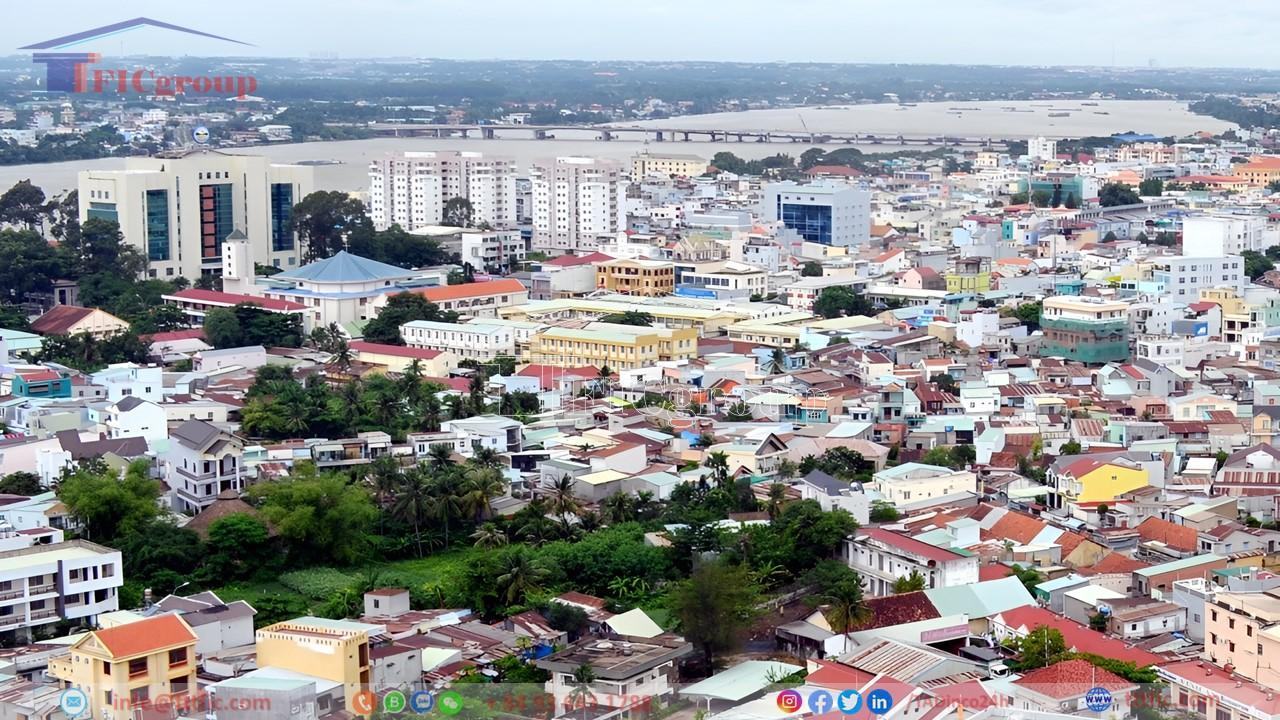
Bien Hoa City – Dong Nai Province – TTTFIC GROUP
As of April 1, 2019, Dong Nai province had 13 different religions, with Catholicism being the largest with 1,015,315 followers, followed by Buddhism with 440,556 followers. Other religions included Caodaism with 34,670 followers, Protestantism with 43,690 followers, Islam with 6,220 followers, Hoa Hao Buddhism with 5,220 followers, Vietnamese Pure Land Buddhism with 530 followers, Tứ Ân Hiếu Nghĩa with 36 followers, Minh Su Dao with 39 followers, Bahá’í with 63 followers, Balamon with 15 followers, Minh Ly Dao with 12 followers, and Buu Son Ky Huong with two followers.
The religious diversity and beliefs in Dong Nai province are well-known. Initially, the settlers followed ancestral worship brought by Lord Nguyen during the colonization and settlement by Nguyen Huu Canh. Alongside that, Buddhism, Daoism, and Confucianism gradually appeared, especially during the Vietnam War as a result of migration due to conflict and circumstances.
Catholicism emerged and thrived in Dong Nai after the 1954 exodus. Buddhism, Hoa Hao Buddhism, and Caodaism gradually appeared as a result of migration. Areas with a significant Catholic population in Dong Nai include Bien Hoa City, Trang Bom district, stretching to Xuan Loc, Thong Nhat, Dinh Quan, and Tan Phu, with over 900,000 Catholic followers.
As of September 30, 2018, the entire province of Đồng Nai had a total of 745 schools, including 84 high schools, 273 secondary schools, and 362 primary schools. Additionally, there were 23 schools for intermediate education and 4 basic education schools. Alongside these, there were also 327 preschools . With such an extensive school system, the education system in Đồng Nai province is relatively comprehensive, contributing to the reduction of illiteracy in the area. Moreover, the area also houses two campuses of the Open University of Ho Chi Minh City, located in Long Bình Tân ward, Biên Hòa City.
Dong Nai exhibits a rich cultural tapestry with unique traditions and folk customs. Festivals such as the Chua Cong Festival, Co Ong Festival, and Nghinh Ong Festival are some noteworthy examples. Tourism has also thrived, featuring captivating attractions like Suoi Tien Park, the Dong Nai Provincial Museum, and the scenic Dong Nai Hills.
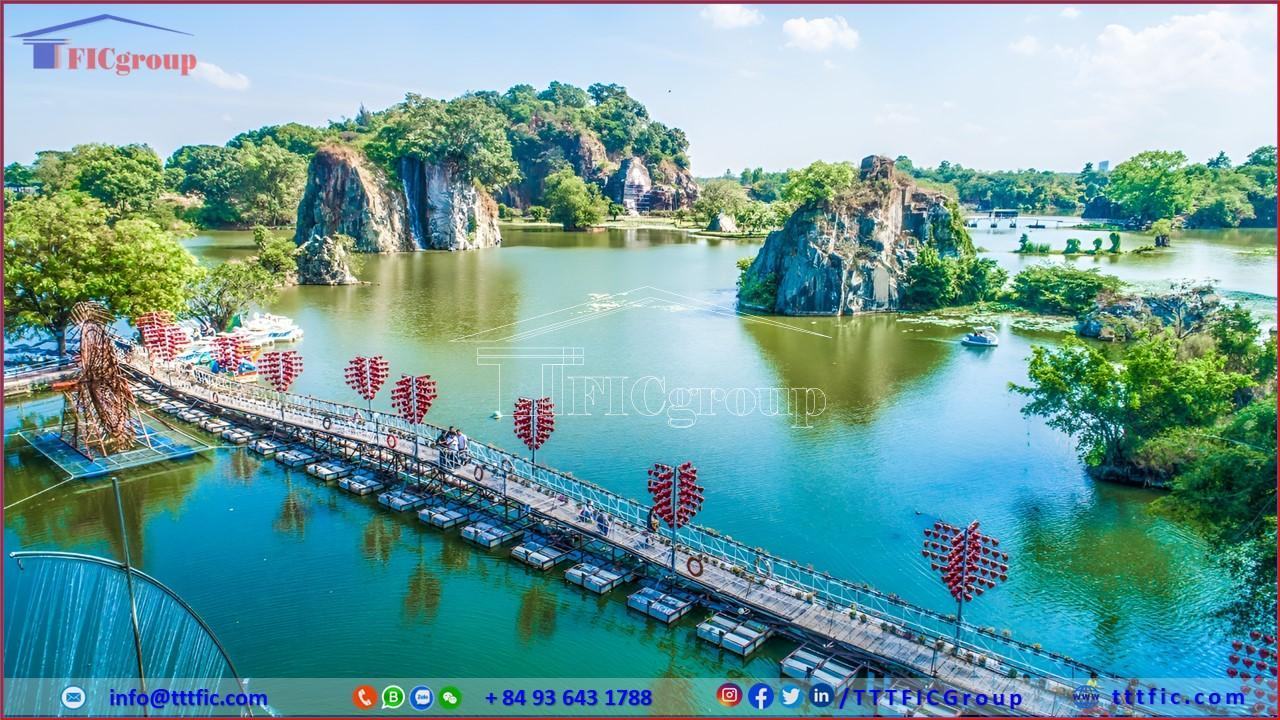
Tourism – Dong Nai – TTTFIC Group
Dong Nai has made significant investments in infrastructure and transportation. The construction of Long Thanh International Airport, slated to become one of Vietnam’s largest airports, is currently underway. Moreover, the province boasts a network of expressways and major roadways that facilitate connectivity to Ho Chi Minh City and other regions.
Dong Nai is actively focusing on sustainable development. The province has promoted green initiatives and environmental improvements, emphasizing the management and conservation of natural resources, including forests and rivers.
In this comprehensive overview, we have delved deeper into Dong Nai Province, a region that seamlessly blends natural resources with robust economic development. With its strategic location, diverse economy, and rich cultural environment, Dong Nai stands as an enticing destination for both residents and visitors.
We offer Information and Consultation Services for Industrial Real Estate, including leasing, buying, foreign direct investment (FDI), mergers and acquisitions (M&A), and legal consultancy for foreign investors.
Call us today for the best opportunities to expand your business into Vietnam! We specialize in M&A consultancy for industrial real estate in industrial zones throughout Vietnam.
————————————
Team Marketing
Hotline : + 84 274 633 6888
Email : info@tttfic.com
Phone : + 84 93 643 1788
Inst/Twitter/LinkedIn/page: /TTTFICGroup
Table of contents






